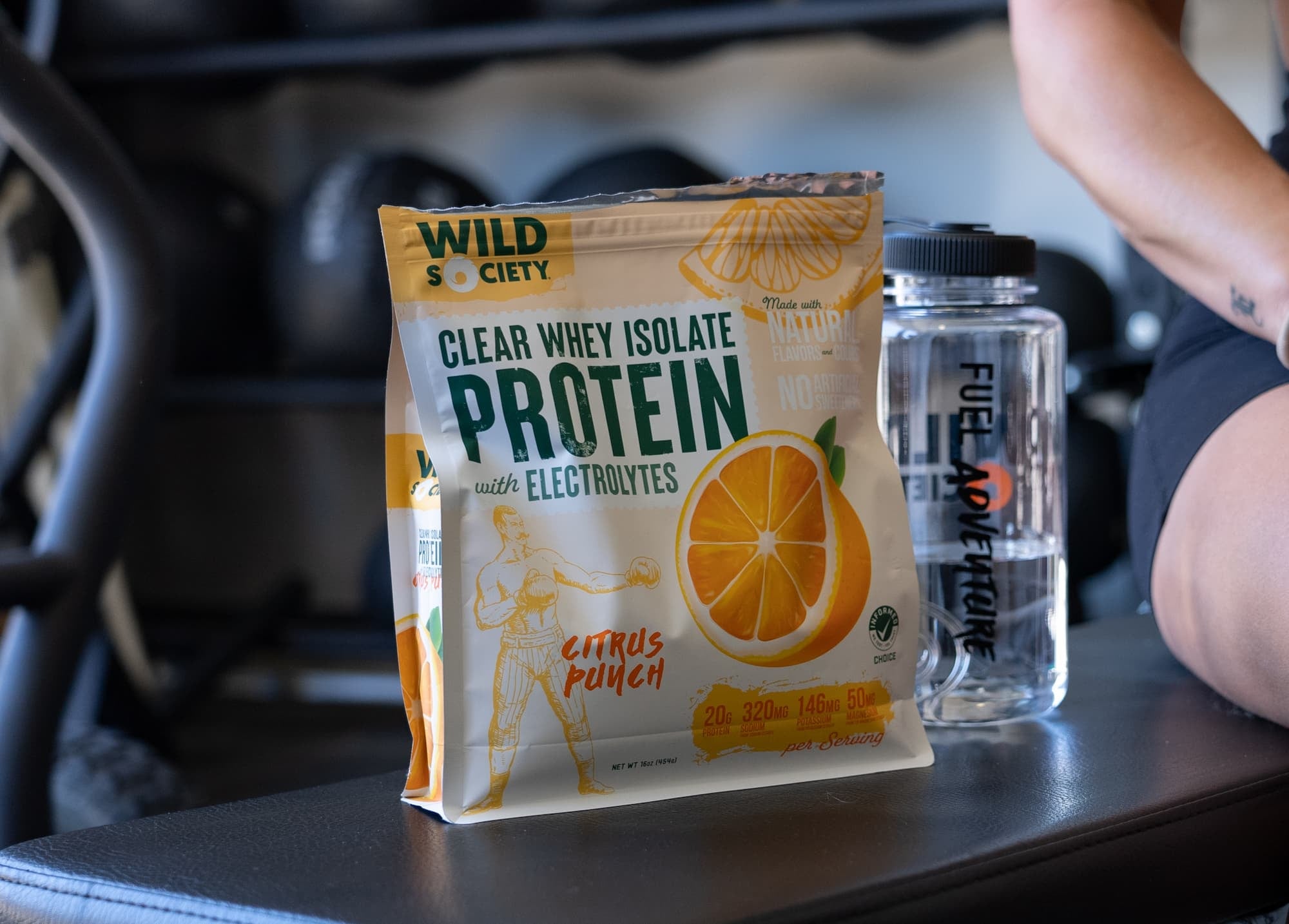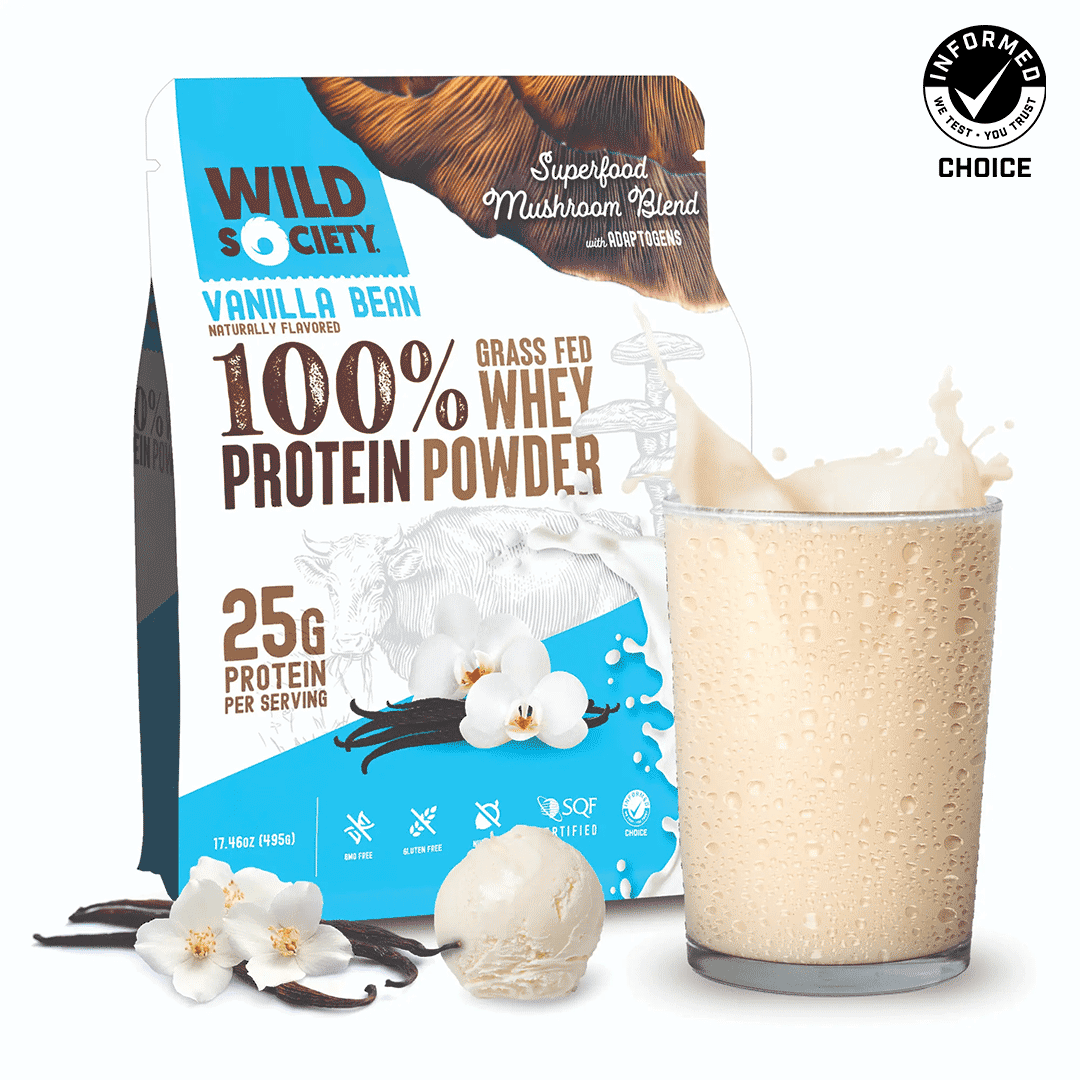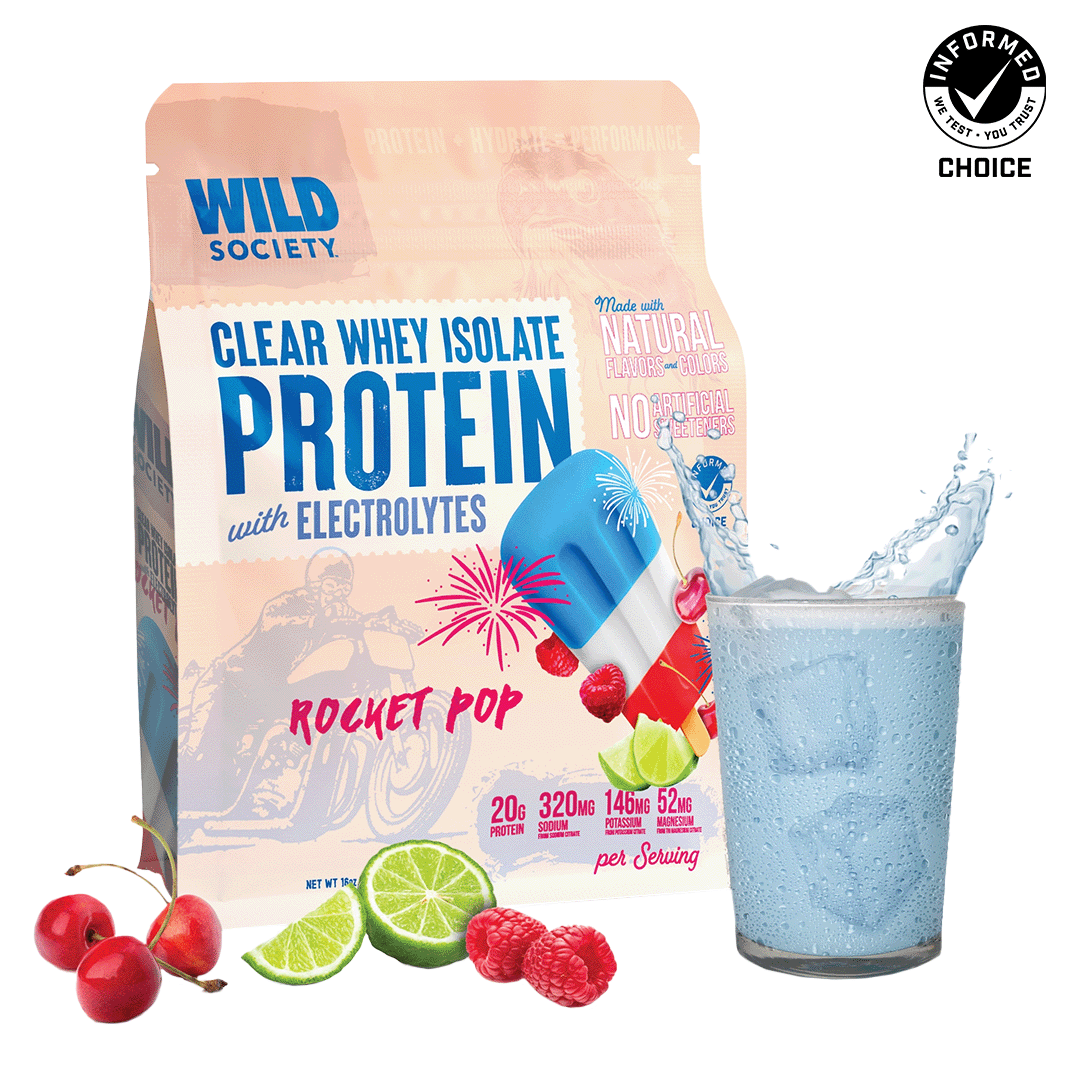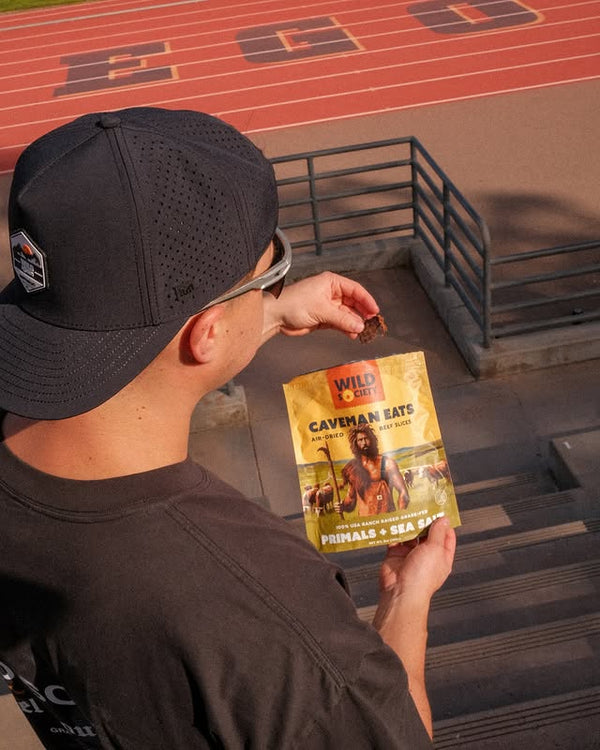Best Workout Splits for Muscle Growth: Your Plan for Maximum Gains

When you’ve hit a wall with your workouts, it’s probably time to switch things up. Building muscle isn’t something that comes easily. It takes dedicated time, energy, planning, and focus to realize consistent strength and muscle gains.
The best workout splits for muscle growth divide work efficiently and effectively, so you can see maximum results without wasting time. Here’s what you need to know about splits and why they should be your all-around strength solution.
What Are Workout Splits and Why Do They Matter?
A workout split divides training exercises between different days of the week. These splits are based on movement style and targeted muscle groups, with some days designated specifically for push/pull exercises or upper/lower body work.
Splits usually include at least one of the big four lifts (squat, deadlift, bench, or military press) along with relevant accessory work that targets the complementary muscle groups.
For example, you might follow your bench press sets with barbell rows and tricep dips. After a heavy squat session, you can continue to work your legs and glutes with split squats, lunges, or glute bridges.
Whole Body vs. Split Workout Routines
If you’re new to lifting and looking to build overall strength, full-body workouts can be a great place to start.
In the long run, however, you may find that you hit a plateau and stop seeing consistent progress. This is your body’s natural adaptive response to doing the same workout again and again.
Even though it may feel like you’re working muscles individually throughout a full-body routine (surprise, surprise!), it’s all connected. For instance if you perform squats before doing shoulder exercises, your overall energy and strength will be reduced by the time you get to your shoulder workout. Since squats are a demanding, full-body movement that engages large muscle groups and requires significant effort, they can fatigue your central nervous system and supporting muscles.
As a result, when you move on to shoulder exercises, you might not be able to lift as much weight or complete as many reps as you normally would. This could limit your ability to reach the necessary training volume (total sets, reps, and weight lifted) required for hypertrophy (muscle growth). In other words, prioritizing squats first might compromise your shoulder workout, making it less effective for muscle-building.
Splits help address this problem by divvying up your most important lifts. This way, you can focus on each muscle group and hit the numbers you need to see consistent gains.
Why choose a split training routine?
Splits offer opportunities for efficient muscle recovery, increased training volumes, and more consistent strength and muscle gains.
By introducing splits, you can focus on specific muscle groups and movements. This allows you to work your muscles more effectively, prevent progress-halting fatigue, and realize greater gains over time.
Key Factors to Consider When Choosing a Workout Split
When choosing the best workout split, consider the following factors:
- Training Frequency: Depending on your schedule and experience, you should aim for between 2 and 6 training days per week. Consider how many days you can realistically commit to from week to week.
- Experience Level: For new, intermediate, and experienced lifters alike, it’s important to choose a plan that suits your experience. Choosing a plan that’s too advanced will leave you feeling fatigued and frustrated, but opting for something too easy won’t challenge your muscles enough to make real progress.
- Recovery Needs: A six-day training schedule might sound appealing, but getting adequate rest is key. Incorporate rest days into your schedule. This can include some light active recovery (i.e., walking, stretching, yoga), but do your best to avoid strenuous activities on your days off.
- Muscle Group Pairing: You should aim to combine exercises that work specific groups of muscles that support each other. For example, work your chest and shoulders on the same day and target the glutes and hamstrings on another.
Best Workout Splits for Maximum Muscle Growth
Now that we know how to pick the right workout routine, let’s look at some examples of training plans.
3-Day Full-Body Split
If you’re new to lifting, a full-body split might be a good place to start. This is ideal for those who want to focus on compound movements. Once you stop making progress, however, it may be time to move on to something more advanced.
Example:
- Monday – Full Body (e.g., squat, bench press, sit-ups)
- Wednesday – Full Body (e.g. deadlift, overhead press, curls)
- Friday – Full Body (e.g., rows, push-ups, split squats)
4-Day Upper/Lower Split
A 4-day split offers a good balance of targeted, intense work and all-essential recovery.
Example:
- Monday – Upper Body (e.g. bench press, accessory work)
- Tuesday – Lower Body (e.g., squat, core, accessory work)
- Wednesday – Rest
- Thursday – Upper Body (e.g. overhead press, accessory work)
- Friday – Lower Body (e.g., deadlift, accessory work)
5-Day Body Part Split
The 5-day split offers a chance for more targeted work, allowing you to spread more of your training volume across the week.
Example:
- Monday – Chest (e.g., bench press, accessory work)
- Tuesday – Back (e.g., barbell rows, rear delt flys, pull-ups)
- Wednesday – Legs (e.g., deadlift, accessory work)
- Thursday – Shoulders (e.g., overhead press, accessory work)
- Friday – Arms (e.g., preacher curls, hammer curls, push-ups)
Push/Pull/Legs (PPL) Split
PPL splits are some of the most effective for hypertrophy and overall strength gains as you’re training related muscle groups together in the same workout.
Example:
- Monday – Push (e.g., bench press, overhead press, accessory work)
- Tuesday – Pull (e.g., deadlift, pull-ups, accessory work)
- Wednesday – Legs (e.g., squat, leg press, accessory work)
- Thursday – Rest
- Friday – Repeat
6-Day PPL Split (Advanced Version)
If you’re an experienced lifter looking for greater training frequency and maximum gains, the 6-day PPL split may be for you.
Example:
- Monday – Push (e.g., bench press, tricep dips, lateral raises, etc.)
- Tuesday – Pull (e.g, deadlift, pull-ups, chest-supported rows, etc.)
- Wednesday – Legs (e.g., squat, leg press, calf raises, etc.)
- Thursday – Push (e.g., overhead press, incline bench press, tricep push down, etc.)
- Friday – Pull (e.g, sumo deadlift/snatch grip deadlift, lat pull-downs, cable rows, etc.)
- Saturday — Legs (e.g., front squat, Romanian deadlift, barbell hip thrusts, etc.)
More Tips for Optimizing Muscle Growth
It takes more than a solid training plan to build muscle. Showing up is only half the battle. Make sure you’re giving your body everything it needs to make the most of your hard work.
Understand the Principle of Progressive Overload
Progressive overload is paramount when you’re looking to build muscle mass and strength. If you’re lifting the same weight for the same number of reps week to week, your body has no reason to adapt beyond that point. Gradually increasing the amount of stress you put on your muscles tells them it’s time to grow.
By increasing the weight, number of reps or sets, and reducing rest time, you can progressively increase your training volume and see more consistent gains. Just be sure to always prioritize proper form and control; there’s nothing like an injury to really take the fun out of it.
Prioritize Proper Nutrition & Protein Intake
Your body works hard. It needs the right fuel to meet the demands of a strenuous workout. Try to eat a varied, balanced diet that includes quality carbohydrates, healthy fats, fiber, and essential vitamins and minerals. Adequate hydration and electrolyte levels are also important for overall health and athletic performance.
Protein is the big buzzword when it comes to building muscle, and for good reason.
While carbs and fats provide essential energy and nutrients, protein is the building block of muscle. Amino acids are what your body uses to repair muscles after a workout, and if you want them to grow, you’ll need to make sure you supply them with the right material.
Stack your day with Wild Society Nutrition to ensure you’re giving your body the nutrients it needs.
Morning Boost Featured Product: Grass Fed Collagen Peptide

-
Key Ingredients: Collagen Peptide
- Protein Content: 20g per serving
When you wake up in the morning, a delicious serving of collagen peptides will give your body what it needs to support you throughout the day. Our Grass-Fed Collagen Peptide contains the four major types of collagen you’ll need.
-
Type I: Strength & Recovery
Supports muscle repair and bone strength. -
Type II: Joint Support
Helps with joint comfort, flexibility, and movement—especially during high-impact activities. -
Type III: Flexibility & Endurance
Supports circulation, muscle flexibility, and endurance. -
Type V: Cell & Tissue Health
Helps with skin, hair, and overall tissue support.
Rapid Recovery Featured Product: Clear Whey Isolate Protein Powder

-
Key Ingredients: Whey protein isolate
- Protein Content: 20g per serving
Directly following your workout, reach for a light drink made with clear protein, which is absorbed quickly by the body. This clear, refreshing protein drink will keep you feeling fresh and fit. It’s packed with electrolytes, magnesium, and potassium, along with your all-important protein. Bonus points: it’s free of any artificial flavors, colors, or sweeteners.
Sleep Recovery Featured Product: Grass-Fed Whey Protein

-
Key Ingredients: Whey protein concentrate
- Protein Content: 25g per serving
Perfect for before bed, grass-fed whey protein concentrate can enhance muscle recovery by increasing protein synthesis rates during the night (1). The added functional mushroom blend further improves endurance (2).
Don’t Compromise on Recovery & Sleep
Muscles grow in response to applied stress, but they need time between workouts to make that happen. Lifting is when you apply tension to your muscles, letting them know that you need them to do more. Rest days are when your muscles have valuable time to repair, strengthen, and grow.
Sleep is especially essential. While you sleep, your body’s hard at work fixing damaged muscle fibers, building mass, and replenishing your energy stores. When you skip your zzz’s, you rob your body of the chance to get stronger, faster, and more resilient.
A March 2023 study published in Sports Medicine investigated the effects of pre-sleep protein ingestion on muscle recovery during sleep. Participants in the randomized controlled trial consumed protein 30 minutes before sleep. This act significantly increased muscular protein synthesis rates during overnight recovery compared to the placebo (3).
Try Supplements for Muscle Growth & Performance
Even with a complete, nutritious diet, there are still some things your body needs for peak performance. The following are some popular supplements that can help you level up your workouts. Of course, it’s always best to check with your doctor before adding a new supplement to your wellness regimen.
- Creatine: Boosts ATP production for muscle energy and promotes muscle growth
- BCAAs: Branched chain amino acids that support muscle repair and protein synthesis
- Pre-workout: Contains compounds like caffeine, l-citrulline, beta-alanine, and taurine to improve energy, endurance, and focus
Featured Product: Green Tea Energy Drink with Nootropics

-
Key Ingredients: Organic green tea extract, L-theanine, Stevia leaf extract
- Protein Content: 100mg per serving
Get your workout started right with a blend of nootropics and natural energy. With organic green tea extract and alpha-GPC for focus, you can supercharge your training and give your body and brain the boost they need to power through.
Common Mistakes to Avoid with Workout Splits
Even with the best intentions, our plans can fall apart. Here are some common mistakes that can keep you from seeing real progress in the gym:
- Lack of Recovery: While it may seem counterintuitive, recovery is where the real strength and muscle gains lie. Training too intensely or too frequently robs your muscles of the chance to heal between workouts, which can leave you feeling fatigued, weak, and burnt out. You can accelerate your recovery (and performance) by fueling your body with the protein it needs. Taking protein can help your body recover better and perform stronger (4).
- Neglecting Certain Muscle Groups: We all have a favorite muscle group to train, but balance is key. Your muscles aren’t isolated; they rely on each other for support. If you neglect your shoulders in favor of leg day, you’ll eventually find it hard to increase your weight on squats. If you ignore your back strength, you may find yourself struggling with overhead presses.
- Poor Exercise Selection: While you may be tempted to target specific muscles with isolated movements, compound exercises are key to overall strength. These engage multiple muscle groups at once for more efficient, effective, functional training.
- Inconsistency: It’s no secret that consistency is the key to progress. Build a realistic workout routine that you can stick to for an extended period of time. A week off here or there won’t set you back significantly, but if you’re consistently skipping days and weeks of your workout plan, it might be time to find something more suited to your lifestyle.
Final Thoughts
If you’re looking to make real strength and muscle gains, it’s usually not enough to simply show up and throw some weights around. Our bodies are complex machines that require adequate stress, recovery, and focused work to adapt and grow.
Split plans offer a strategic balance of targeted training and recovery to help you see real results. Depending on your experience, schedule, and goals, it’s important to pick the plan that suits you best. By choosing the right training plan and giving your body the adequate nutrition, rest, and support it needs to perform its best, you can see consistent, sustainable progress towards your muscle-building goals.
















